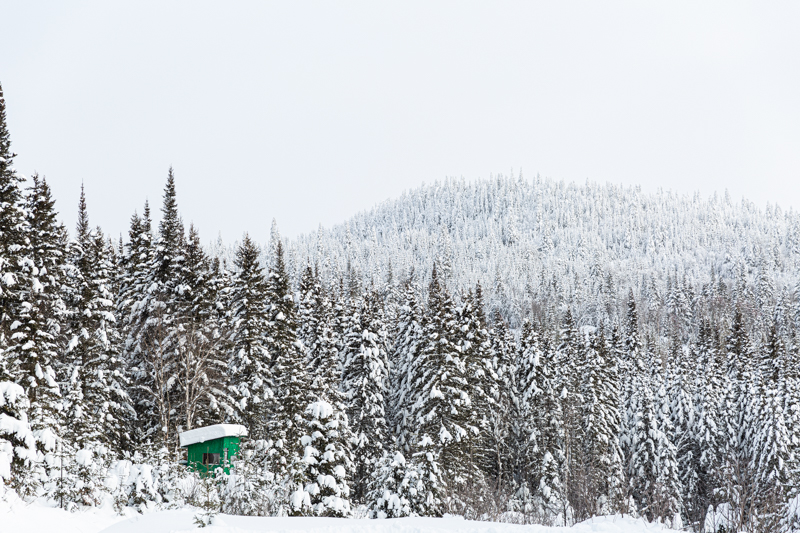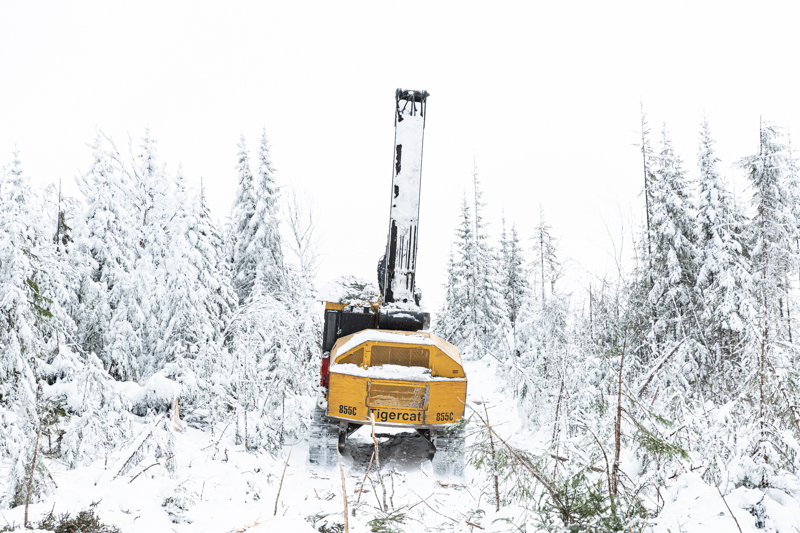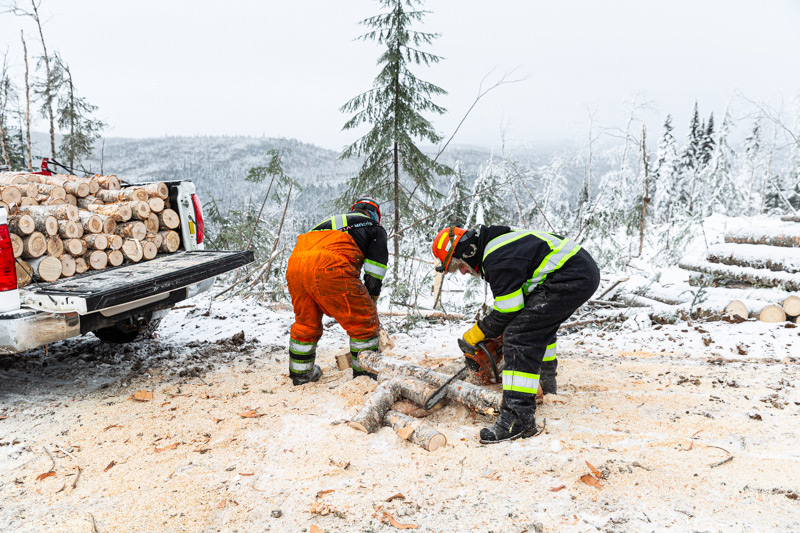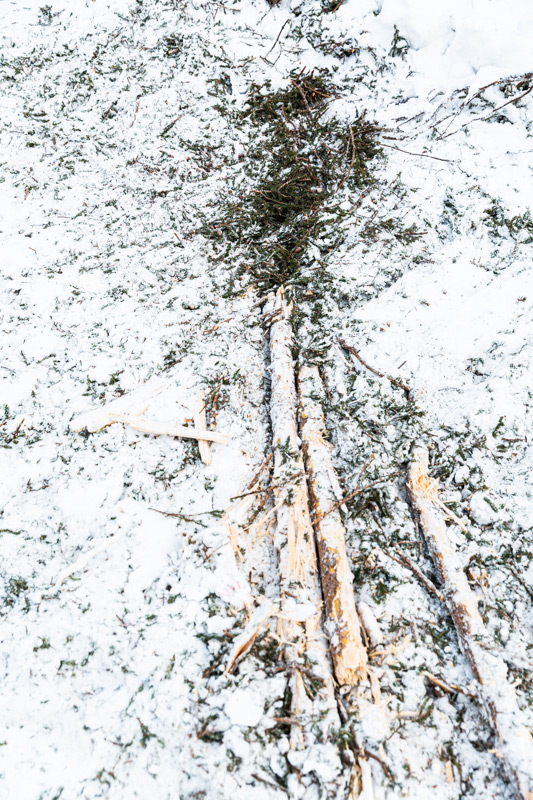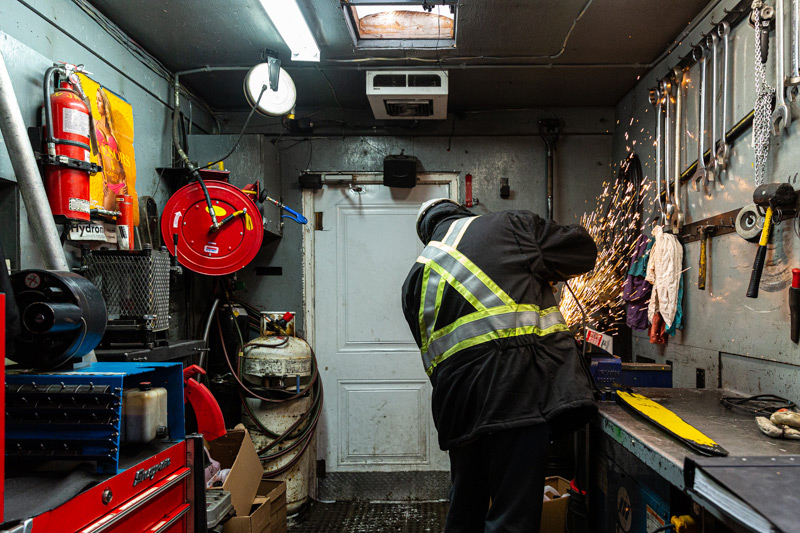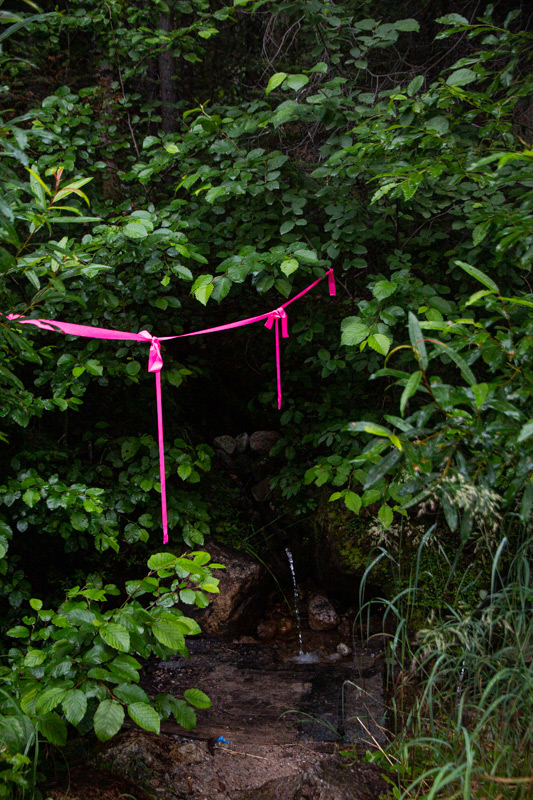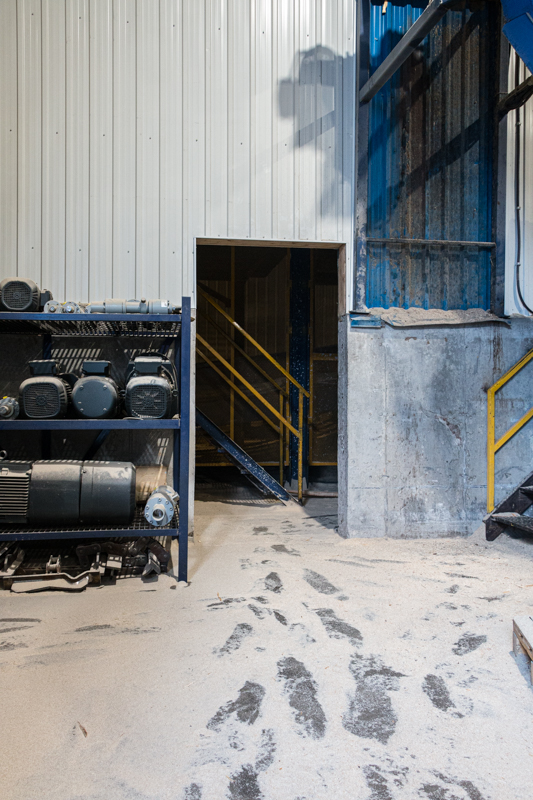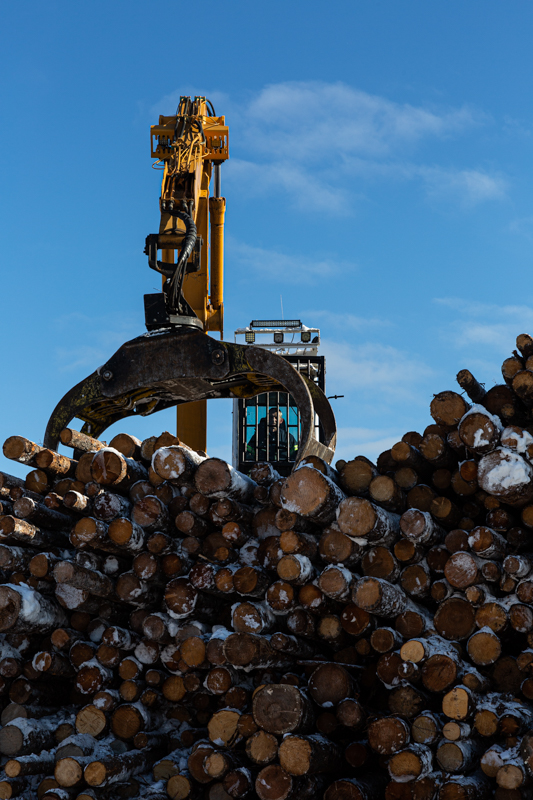[January 14, 2020]
By Emmanuel Simard
For five years, impelled by his exploration of “issues related to nordicity [and to] the transformation of the land by human activity,”[1] photographer Sébastien Michaud travelled through the dense forests covering the Saguenay–Lac-Saint-Jean region and became involved in the lives of dozens of lumber industry workers. He took away from the experience a long-format photo report that forms the trilogy of books titled Forest Gardeners.
The first volume, published by Éditions Bourrasques in 2019, focuses on people who work in tree nurseries; the second volume presents a series of portraits of foresters accompanied by accounts (in the form of short texts) of their work in the forest, the nature of their commitments, and the reasons that they practise this trade – all requested by Michaud. To conclude the project, the third volume, recently published (October 2020) is on the subject of “the harvesting and processing of trees . . . revealed both in the forest and in sawmills.”
Michaud’s gaze is lively, vigilant, perceptive, and perfectly adapted to the energy of his reportage. In addition, he decided to give the books a format related to that of a newspaper. Quite large in dimensions, folded at the centre, the publication, with striking humility, melds with its subject frankly and directly, without affectation. Michaud invites us – as did author and poet Pierre Morency, who wrote copiously about the North – to “learn to rediscover the humblest realities that inhabit our surroundings” and bluntly presents us with the environments in which the trade in this sought-after raw material takes place. As he reminds us in this volume, the northern forest is composed mainly (85 percent) of black spruce, a species coveted for its strength both for construction lumber and for its chips used to manufacture pulp and paper.
The cover photograph provides a metaphor for the dilemma that the vagaries of the lumber industry might represent to readers: a vast space filled with tree trunks piled in rows; above, a cloud reminiscent of a comic-book speech bubble, suggesting that the spruce tree surely had much to say. Is it reflecting on how it is a “renewable natural resource, an important ecological alternative to other materials that do not have this characteristic,” as semiologist and arborist Paule Macrous suggests in the eco-sensitive introduction? Or, in a more elegiac tone, is it thinking of the settings that might have given rise to its final songs in the canopy? Another photograph shows trees tied together by fluorescent-pink tape, slightly creased, floating in the wind, evoking Sappho’s poem: “Slumber pours down from quivering leaves.”[2]
Another image, on a double-page spread, offers a view of transversal cut of tree trunks in rows, creating the illusion of thousands of eyes staring at the reader – reminding us of the old adage “The trees have eyes.” Although Michaud is still interested in presenting workers in action in the forest, this third volume holds fewer faces. The lyric quality of certain pictures sharpens the gaze even more; in these spaces of forestry exploitation, the trees also speak for themselves. Michaud creates room for them and gives them a voice. He avoids turning these stark vistas into what would be awkwardly “poetic.” His photographs meld with the humility of the workers and their tasks and draw strength from his authentic gaze – or, better put, a gaze with no prior judgment. This is what makes them interesting.
The forest under white plastic in sawmill yards might leave us thinking the worst, even though we “can’t help but seek, in the eyes of his workers, the presence of a reciprocity that assures us that the gutted forest still bears within itself the resources for its future.”[3] It is with great subtlety, worthy of journalistic narratives, that Michaud perhaps makes these “gardeners” – as they are presented in the title – more into guardians of the forest; after all, gardeners is almost a homophone for guardians.
[1] https://sebastienmichaud.com/A-propos-About (our translation).
[2] The Poems of Sappho, trans. Edwin Marion Cox (Good Press, 2020), 66.
[3] Paule Mackrous, “Introduction,” in Sébastien Michaud, Forest Gardeners, vol. 3 (Quebec City and New Brunswick: éditions Bourrasques, 2020) (our translation).
Drawn to various issues (nordicity, mass recreation, social hierarchies, transformation of territories), Montreal artist Sébastien Michaud practises documentary and conceptual photography. Trained in analogue photography, Michaud likes to take his time with his subjects. His projects, featured in exhibitions from the Gaspé to France, have also taken the form of books. He is a photography teacher and co-founder of the publishing house Éditions Bourrasques. sebastienmichaud.com
Emmanuel Simard has published four volumes of poetry with Éditions Poètes de brousse, the most recent of which is La maison est vivante. He has also put out a first children’s book with Éditions D’Eux, Nocturne, illustrated by Maud Legrand. He contributes to the magazine Lettres québécoises as a critic.

